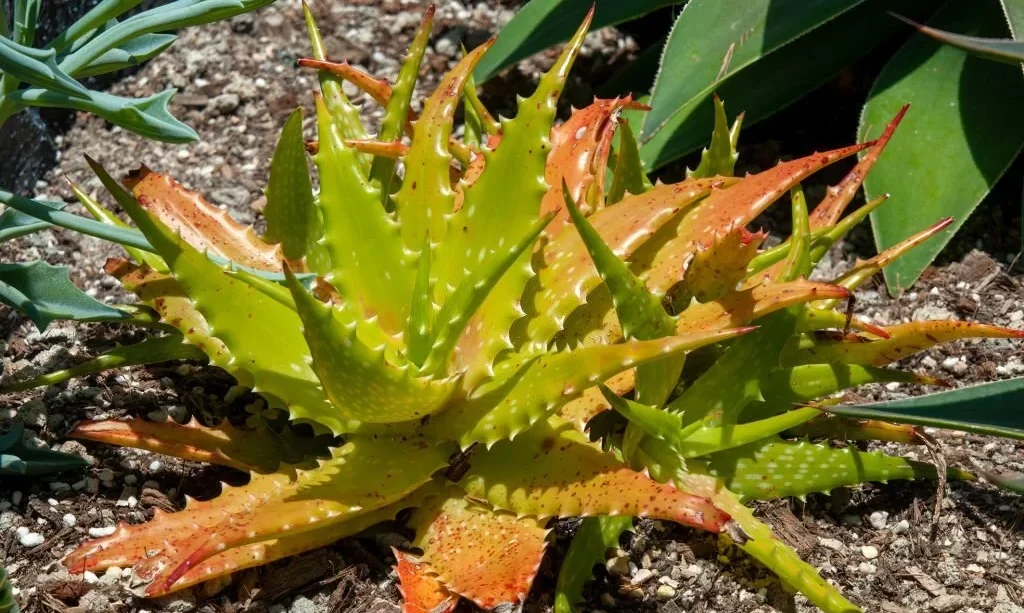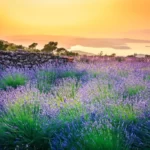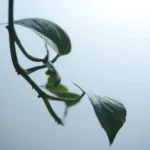Aloe plants, with their fleshy leaves and numerous healing properties, have become a staple in many households. These succulents are celebrated for their resilience and low maintenance. However, a common concern among aloe plant owners is the sight of yellowing leaves. If you’ve noticed your aloe plant’s leaves turning yellow, fret not – it might not be a cause for alarm. In this guide, we’ll explore the various reasons behind aloe plant leaf discoloration, starting with the most innocent and natural one: natural leaf aging.
- Pamper your succulents with Miracle-Gro Cactus, Palm & Citrus Potting Mix and Miracle-Gro Succulent Plant Food
- The 8-qt. bag of potting soil is specially formulated for use with cactus, palm, citrus and succulents
- This potting mix contains forest products, sand and perlite to help prevent soil compaction and improve drainage
- Instantly feed cacti, jade, aloe, and other popular succulents with this 8-oz. liquid plant food
- Apply the plant food every two weeks
Natural Leaf Aging
One common reason for aloe plants to turn yellow is natural leaf aging. Aloe plants, like all succulents, have a natural life cycle for their leaves. As the lower, older leaves age, they gradually turn yellow and then brown before eventually drying up and falling off. This process is entirely normal and part of the plant’s growth and renewal.
Aloe leaves are not meant to last indefinitely, and they have a finite lifespan. The outermost leaves, which are the oldest, will show signs of aging first. As they age, they become less efficient at photosynthesis and water storage, leading to the yellowing you observe. The plant strategically reallocates resources to its newer leaves, which are closer to the center or the top of the rosette.
To differentiate between natural leaf aging and other issues causing yellowing, examine the entire plant. If only a few lower leaves are yellowing while the inner leaves remain healthy and green, it’s likely just the natural progression of leaf life. Regularly removing these yellowed leaves not only improves the plant’s appearance but also redirects energy to newer, healthier growth, ensuring your aloe continues to thrive.
Overwatering
One of the most common reasons for aloe plant leaves turning yellow is overwatering. Aloe plants are adapted to thrive in arid conditions, and their roots are prone to rot if exposed to excessive moisture. Here’s a closer look at how overwatering affects aloe plants:
- Root Rot: Overwatering can lead to root rot, a fungal condition that damages the plant’s root system. When the roots are compromised, they can no longer absorb nutrients effectively, leading to yellowing leaves.
- Soil Saturation: When the soil remains consistently wet, it deprives the roots of oxygen, causing stress to the plant.
- Leaf Discoloration: As a result of root damage and stress, the lower leaves of the aloe plant may turn yellow, often starting at the base and spreading upward.
To address overwatering, it’s crucial to adjust your watering practices and allow the soil to dry out between waterings.
- Miracle-Gro Succulent Potting Mix is specially formulated for succulents
- This potting mix is a blend of sphagnum peat moss, processed forest products, and Miracle-Gro plant food
- Use with indoor succulent plants, including aloe vera, cacti, echeverias, houseleek, burro’s tail and more
- To plant succulents, select a pot with a drain hole, fill 1/3 full of potting mix, place your plant in the pot, cover with more mix and press lightly; water and enjoy
- One 4 qt. bag of Miracle-Gro Succulent Potting Mix fills one 8-inch container; amounts vary based on the size of the root ball
Underwatering
While overwatering is a common issue, underwatering can also lead to yellowing leaves in aloe plants. Aloe plants require regular, but not excessive, moisture to thrive. Here’s how underwatering can impact your aloe:
- Moisture Stress: Inadequate water supply can stress the plant, causing it to conserve moisture by sacrificing lower leaves.
- Wilting and Yellowing: When an aloe plant is not receiving enough water, you may notice wilting leaves that eventually turn yellow.
- Stunted Growth: Prolonged periods of underwatering can hinder the plant’s growth and overall health.
To remedy underwatering, establish a consistent watering schedule and ensure the soil is adequately moist without being waterlogged.
Sunlight Issues
Aloe plants thrive in bright, indirect sunlight, and inadequate or excessive exposure to sunlight can lead to leaf discoloration:
- Insufficient Light: When aloe plants do not receive enough light, they may become elongated, leggy, and pale. This can result in leaves turning yellow due to decreased photosynthesis.
- Direct Sunlight: On the other hand, exposing aloe plants to intense, direct sunlight for extended periods can cause sunburn, leading to reddish or yellowish discoloration on the leaves.
Balancing the light exposure by providing bright, indirect sunlight is crucial for maintaining the vibrant green color of your aloe plant’s leaves.
Pot Size and Soil Issues
The choice of pot size and the quality of the soil play significant roles in aloe plant health and leaf color:
- Pot Size: Aloe plants should be potted in containers that allow for adequate root space. In pots that are too small, roots may become cramped, leading to reduced nutrient uptake and yellowing leaves.
- Soil Drainage: Aloe plants require well-draining soil to prevent waterlogged roots. Poor drainage can result in root rot and subsequent leaf yellowing.
- Soil Quality: The soil used for aloe plants should be specifically formulated for succulents and cacti, ensuring proper aeration and drainage.
Choosing an appropriately sized pot and using well-draining, high-quality soil can significantly contribute to the overall health and vibrancy of your aloe plant’s leaves.
- Great Plant Pot Set: The decorative planter pot with a farmhouse style font fits the most home decor and can be paired with a variety of plants. This pair of flower pots make a great gift for your friends or family on birthdays, Mother’s day, housewarming, etc
- Large + Small Size: Package includes 2 ceramic pots and 2 bamboo trays. “Say Aloe” pot measures 4.7” H x 4.7” W. “Little Friend” pot measures 3.1” H x 3.1” W. Plants are NOT INCLUDED, so you can choose and enjoy their preferred plants
- Premium Quality Material: These succulent planters are made of premium quality ceramic material and the “punny saying” is premium grade vinyl decal that is water, scratch, and abrasion resistant
- Drainage Hole & Bamboo Saucer Tray: The ceramic plant pot comes with a drainage hole in the bottom to prevent overwatering. A saucer made of bamboo is supplied with the planter pot
- Service Support: Purchase with confidence! Every order includes new items that are carefully hand packaged and sealed in a box. If you have any questions about our products, contact us and we’ll make it right
Nutrient Deficiency
Aloe plants, like all living organisms, require essential nutrients to thrive, and a deficiency in these nutrients can manifest as yellowing leaves:
- Nitrogen Deficiency: A lack of nitrogen, a primary plant nutrient, can lead to pale or yellowish leaves. Nitrogen is vital for chlorophyll production, and its deficiency can hinder photosynthesis.
- Fertilization: Aloe plants benefit from occasional fertilization with a balanced, diluted liquid fertilizer. This provides the necessary nutrients to maintain healthy foliage and vibrant green leaves.
Addressing nutrient deficiencies through appropriate fertilization can help restore your aloe plant’s leaf color to its natural green.
Pests and Diseases
Aloe plants are generally hardy, but they can fall victim to common pests and diseases that cause yellowing leaves:
- Pests: Pests like mealybugs, aphids, and spider mites can infest aloe plants, sucking out sap and causing leaf discoloration. Examine your plant closely for signs of these pests.
- Diseases: Fungal diseases, such as root rot or leaf spot, can affect aloe plants when conditions are overly moist. Yellowing leaves may be a symptom of an underlying disease issue.
Identifying and addressing pest infestations or diseases promptly is essential to prevent further damage and restore your aloe plant’s leaf health.
Understanding these potential issues, such as nutrient deficiencies and pest infestations, can help you take targeted corrective actions to return your aloe plant’s leaves to their natural green color.
- Specially formulated to provide the correct growing environment for aloe plants, don’t just keep it alive, let it thrive.
- Ingredients: Peat Moss, Perlite, Sand, Lime
- The added sand increases drainage over just using Perlite alone, Lime increases the PH to ensure the soil correctly provides aloe specific nutrition.
- Aloe is traditionally an easy to care for plant, however getting lots of new growth, isn’t so easy, using a correct soil can be effective in getting size on your plant faster.
- 2 Quarts of soil is an 8 inch x 10 inch bag that will allow the re-potting 3-4 small aloe plants or 1-2 medium plants.
Temperature and Environmental Stress
Temperature and environmental stressors can have a significant impact on the health and leaf color of aloe plants:
- Extreme Temperatures: Aloe plants prefer moderate temperatures and can suffer when exposed to extreme cold or heat. Prolonged exposure to extreme temperatures can result in leaf yellowing and damage.
- Drafts: Sudden temperature changes, such as drafts from air conditioning or heating systems, can stress aloe plants, leading to discoloration.
- Environmental Changes: Changes in the plant’s environment, such as moving it to a new location or repotting, can cause stress and affect leaf color.
To prevent temperature and environmental stress from affecting your aloe plant, provide a stable and suitable environment, protect it from drafts, and avoid sudden changes in its surroundings.
Conclusion
Understanding why your aloe plant’s leaves may turn yellow is essential for maintaining the health and vibrancy of this beloved succulent. Whether it’s due to natural leaf aging, overwatering, underwatering, sunlight issues, pot size, soil quality, nutrient deficiencies, pests, diseases, or environmental stress, each factor offers valuable insights into the well-being of your plant.
By recognizing the specific cause of leaf yellowing, you can take targeted corrective actions to address the issue and restore your aloe plant’s leaves to their lush green color. Remember that aloe plants are resilient and, with proper care and attention, can rebound to their full glory, providing you with both their soothing gel and their natural beauty.







